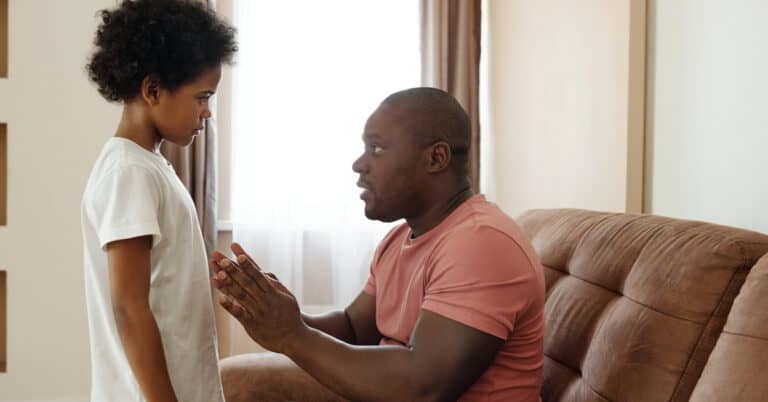Most foster parents are parenting children who’ve experienced trauma. It is estimated that 90% of children who enter foster care have been exposed to a traumatic event (Dorsey et al., 2012). Some have experienced physical or sexual abuse. Others may have been neglected or witnessed domestic violence. Traumatic experiences from the past can impact the way a child behaves on a daily basis. This can occur even when they are no longer in danger. For children, caretakers will play the largest role in their healing process. Great parenting is the best way to help kids get back to the business of being a kid!
Bruce Perry, M.D., Ph.D. developed the Caregiver Education Series in order to provide caregivers with information and strategies to help traumatized children. “Helping Traumatized Children: A Brief Overview for Caregivers” (2014) is included in this series and outlines several essential parenting strategies. This complete article and additional resources for caretakers can be found on the Child Trauma Academy website. Below are these helpful tips when parenting children who’ve experienced trauma.
Communication, Structure, Compassion
1. Don’t be afraid to talk about the traumatic event. Perry explains that not talking about the traumatic event only postpones the healing process. He advises that caretakers not bring the event up on their own, but be ready to listen when the child brings it up.
2. Provide a consistent, predictable pattern for the day. Make sure that the child has a structure and routine for their day. Eating, sleeping, playing, and doing homework at the same time each day promotes predictability and safety. Make sure to let the child know ahead of time if the daily routine will be different and why it will be different.
3. Be nurturing, comforting, and affectionate in an appropriate context. Perry explains that children, particularly young children, need physical comfort as a type of reassurance. Parents may worry that physical comfort will upset a traumatized child. Perry advises that caretakers allow children to seek affection from them rather than initiate it.

Expectations, Vigilance, Protection
4. Discuss your expectations for behavior and your style of discipline with the child. Make sure that you have a clear set of rules and consequences for both following and breaking the rules. Be consistent and compassionate when applying the rules. Use positive reinforcement and rewards. Do not use physical discipline.
5. Watch for signs of re-enactment. Children are likely to deal with traumatic events by including them in their play, drawing, and conversation. Caretakers are most likely to see this right after the traumatic event has happened. But it can occur years after the event as well. Perry explains that these behaviors may occur again because the child has experienced a reminder of the event. The best thing caretakers can do when they see this behavior is to provide extra comfort and emotional support.
6. Protect the child. If you notice that a particular activity or event is upsetting or re-traumatizing to the child, stop the activity. It is okay to avoid activities that you know are disturbing to your child.
Providing Choices, Asking for Help
7. Give the child choices. One of the effects of trauma is a sense of a loss of control. A traumatized child is likely to show an increase in challenging behavior when they feel they have no choices. A lack of control reminds them of the feelings they had during the traumatic event. Perry demonstrates that expectations and consequences can be framed as a choice. “You have a choice, you can do what I have asked or you can choose…”
8. Ask for help. Helping a traumatized child isn’t always straightforward. The more you know about the impact of trauma on children, the better you will be at helping them heal. Share your challenges with your child’s team and ask for help whenever you need it.



